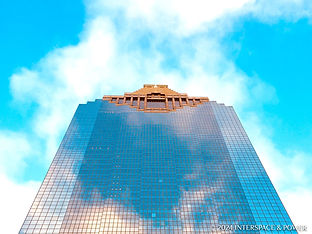
Interspace & Power
Architecture that creates the power within
Throughout history, rulers, governments, enterprises, institutions and societies at large have employed architecture as a means of projecting power, in the name of authority, legitimacy, sovereignty, divinity, economy, judiciary, and permanence,
which shape the physical and symbolic landscape of a society.
This website “INTERSPACE & POWER” introduces different types of architecture that have played a pivotal role in the creation and manifestation of power.
Click each type of architecture below for more details.

The legislative building stands as a physical embodiment of political power and governance within a nation, where a legislative assembly of elected representatives exercise their power to debate, propose and pass laws in the chambers resided in the building, typically either at a provincial or federal level. The legislative building becomes a focal point for the expression of democratic values signifying the role of the legislative branch in shaping the political landscape and governance.
Legislative Buildings
Executive Government Buildings
Executive government buildings symbolize the authority and operational core of a nation's executive branch. These structures often project power through their imposing architecture, strategic location, and historical significance. They serve as the physical space where executive authority is exercised. The design typically emphasizes grandeur and permanence, with elements like large columns, domes, or expansive courtyards, to convey stability and command respect.

Judicial Buildings
Judicial buildings, including courthouses, embody the authority of the judiciary in upholding the rule of law. Courthouses serve as venues for trials, where judges and juries exercise power to resolve disputes, enforce laws, and protect rights. These facilities demonstrate the judiciary’s power to interpret laws, determine accountability, and ensure public safety. Often grand and solid in design, the judicial buildings reflect the dignity and permanence of justice, reinforcing public confidence in the legal system and its foundational principles.


City Halls
A city hall is an administrative building which typically houses city council, mayor's office, its associated departments, and city employees, embodying the civic power within a municipality as the epicenter of local governance. A city council is normally held in a council chamber resided in a city hall where the city council writes and passes local laws that directly impact the community.
Official Residences

An official residence is a residential building for the heads of state or heads of government during their term. The official residence typically contains not only living space, but also spaces that serve for diplomatic engagements, state ceremonies, and official functions, projecting an image of national authority and power.
Financial Buildings
Financial buildings, such as central banks and commercial institutes, are pillars of economic stability and growth. Central banks regulate monetary policy, issue currency, and oversee institutions wielding immense power to influence economies and control inflation. Commercial banks and investment firms, on the other hand, provide loans, deposits, and financial services, empowering businesses and individuals to manage and grow wealth. These buildings symbolize trust and authority, ensure stability and liquidity, and drive both local economies and global financial networks.
.jpg)
Skyscrapers
Skyscrapers stand as iconic symbols of power in the modern urban landscape. These buildings often reflect the economic, political and technological prosperity of a city or a nation. They typically house the headquarters of major corporations, financial institutions, and government offices, showcasing the intertwined relationship between the skyscrapers and societal power.

Places of Worship
Places of worship are considered as sacred spaces where the divine and mystical powers are believed to manifest. These spaces such as temples, shrines, or churches, foster spiritual experiences and connection with the divine and create an environment for transcendent encounters through rituals, prayers and the sacred design of the buildings. The act of gathering in these places often brings a shared spiritual energy that helps individuals and communities feel closer to the divine and mystical powers.

Infrastructural Buildings
The architecture of infrastructural buildings often reflects the power of the institutions that create them. These buildings are designed not only to serve practical functions but also to symbolize authority, stability, and modernity. Their monumental forms, grand facades, and central locations assert control over space. By shaping how people travel, connect, and interact, they reinforce the influence of governments, corporations, or empires. Thus, infrastructural architecture becomes a visible expression of both functional necessity and institutional power.





